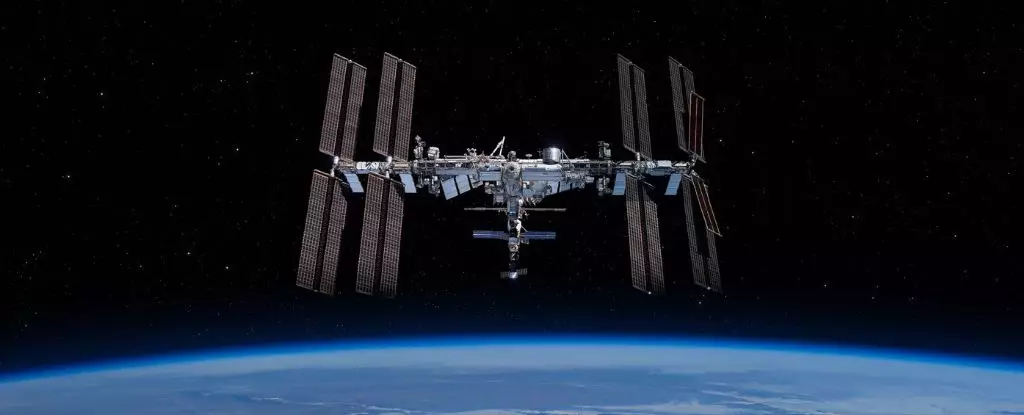Recent events aboard the International Space Station (ISS) brought unexpected challenges as the latest cargo spacecraft arrived. Docking with the ISS typically involves a routine exchange of supplies including food, water, clothing, and scientific instruments; however, this time the incident came with a puzzling twist. Upon the arrival of the uncrewed Russian Progress spacecraft, astronauts reported an alarming and peculiar smell wafting from the open hatch. This odor was accompanied by the sight of minuscule droplets floating in the station’s microgravity environment.
The response from the crew was swift and cautious. Recognizing that even minor odors in a closed environment could signal the presence of toxic substances, the astronauts quickly closed the hatch on the Progress spacecraft and activated the air scrubbers to cleanse the atmosphere of potential contaminants. Reports verified by the ISS X account indicated that after cleaning, contaminant sensors detected normal air quality, reassuring the crew that they were not in immediate danger. Yet, the incident underscored the significance of maintaining a sterile and safe environment within the ISS.
The challenge of odors in confined spaces such as the ISS is not a new phenomenon. In fact, astronauts have often described the overall scent of the station as a peculiar blend—an unsettling mix reminiscent of burnt food and human perspiration. Despite meticulous testing of cargo items before launch, variances in environmental conditions, particularly the phenomena of outgassing, alter how smells are perceived in orbit. Outgassing occurs when materials release trapped gases and vapors when exposed to changes in temperature or pressure, resulting in an unforeseen release of odors that may not have been present on Earth.
NASA officials attributed the unusual odors from the Progress spacecraft to this outgassing effect. While it poses legitimate concerns, it’s critical for space agencies to meticulously select materials for use in orbit, emphasizing those with low-outgassing properties. The integrity of both spacecraft and astronaut health hinges on rigorous quality control measures targeted at chemical composition and environmental behavior under space conditions.
Historical incidents within space exploration serve as a cautionary tale regarding the implications of material failure and odor issues in space. For instance, during the Apollo 8 mission, a silicon rubber seal began to emit large amounts of gas, leading to the temporary contamination of an observation window. Such occurrences serve as a reminder of the potential hazards volatile materials can pose to astronauts’ health and the operational functionality of spacecraft systems. While the recent episode aboard the ISS did not reach such severity, it still raises questions regarding the quality assurance processes for materials sent to space.
The lingering odor from the latest cargo may still signify complications beyond just the internal materials of the Progress spacecraft. The source of the smell remains unidentified, leaving open the possibility that the docking mechanism may inadvertently contribute to the problem. If investigations confirm that this is the case, the smell could persist even after the Progress spacecraft’s return to Earth, indicating the need for more comprehensive evaluations during the docking procedure.
This recent episode highlights the complex challenges faced by astronauts aboard the ISS. While astronauts are trained to handle a variety of unanticipated situations, unusual odors—especially those indicating potential toxicity—demand immediate attention. The incident serves as a stark reminder of the delicate balance needed to maintain not only the health of astronauts but also the functionality of the equipment surrounding them.
As space exploration continues to expand, the intricate relationships among spacecraft materials, astronaut safety, and environmental control systems demand an unwavering commitment to vigilance. Ensuring that only safe, robust materials enter the ISS will be paramount in not only avoiding odors but also fostering a sustainable living and working environment in the final frontier. The spirit of human adventure in space presupposes a commitment to safety, scientific inquiry, and preparedness for any uncharted occurrences that can arise in the most unexpected of places.

